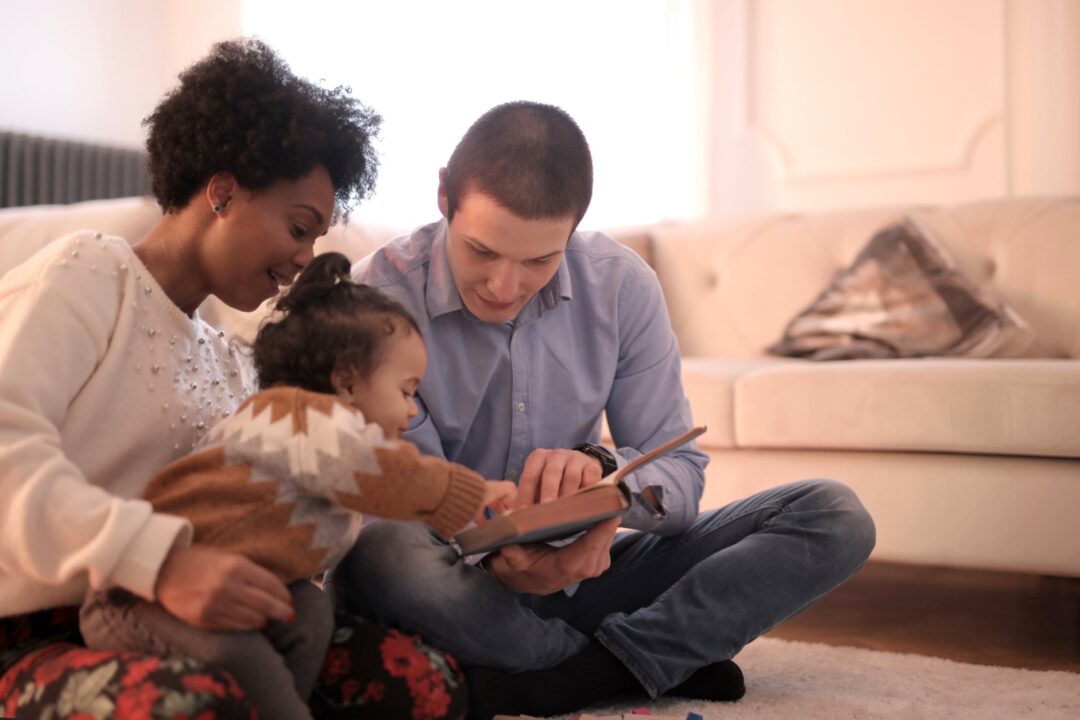A blended family is easily defined as two separate families becoming one via a second (or third) marriage. Blended families typically include step-parents and most often stepchildren, and don’t forget about step-grandparents and all the members of the extended families.
Blended families are sometimes referred to as reconstituted families or complex families. Newly blended families also come with their own unique set of challenges and benefits.
The Challenges Blended Families Often Face
When two separate families come together to live under one roof, the bonding doesn’t always happen right away. In fact, it can take up to two years (and sometimes even a little more) for blended families to adjust to their “new” family, according to the American Academy of Child and Adolescent Psychiatry (AACAP). So don’t be so quickly disheartened if your families are not blending perfectly right from the start!
Here are the most common challenges that newly blended families face:
Relationship Dynamics and Disciplinary Roles
When two separate families become one, a lot of different things are coming together—especially the relationship dynamics and disciplinary roles.
In some cases, an individual enters into a blended family without having any children of their own. Now, this individual who was once a fun, non-authoritative significant other, must step into the role of “stepparent.” This new role can become complicated, especially for a first-time parent.
The challenge still remains when both sides have children of their own. Consider that children of all ages may also struggle with grief over the loss of their previous family, whether the cause was a divorce or the death of a parent.
It takes time to figure out where everyone stands within this new family dynamic. Mutual respect and trust must be given and earned among everyone—and the appropriate roles must be assigned and acknowledged.
Financial Responsibilities
In some cases, entering into a blended family provides financial relief. In other cases, finances may be stretched a bit thin due to having to provide for more children plus paying a mortgage on a bigger home that can accommodate everyone.
Each financial situation is unique, especially since you’ll also have to figure out how money and assets will be divided among your new family in the event that something unfortunate happens.
Sibling Rivalry
Siblings already compete for attention in a nuclear family. The competition tends to become a bit more inflamed among step-siblings who may or may not feel comfortable around each other just yet.
With a blended family, you can have an only child that isn’t used to having to sharing the attention with another sibling. Or, in other cases, the children aren’t used to sharing their parent. Additionally, step-siblings are often strangers rather than siblings throughout the adjustment period, which can cause a rift between the step-parents and the biological parents, too.
Aside from allowing the kids to adjust on their own, all the parents should lay fair down ground rules for everyone to follow, including how the kids will be disciplined.
Feeling Like a Real Family
Bear in mind a considerable adjustment period for blended families sharing a home. More often than not, it ends up feeling like you’re two separate families bunking together and not like real family. Allow this to be the case, and don’t try to push too hard for things to blend perfectly and quickly.
Strong bonds can’t be forced overnight, especially if the step-siblings aren’t comfortable around each other or around their new step-parent just yet. Allow time and patience to let you find ways to transition into your new family dynamic.
The Benefits of Being A Part of a Blended Family
Of course, just because there are a number of obstacles to overcome with your newly blended family, doesn’t mean it isn’t worth it. There are also tons of benefits that come with this new family dynamic.
Here are some of the greatest advantages to being a part of a blended family:
Another Perspective on Parental Guidance
Arguably the most important aspect of having a blended family is that the children involved will get both a mother and father figure. This is especially critical if one or more of the biological parents are deceased or mostly absent from their child’s life.
Even if all the biological parents are alive and well, there’s a still an advantage there. Having an extra parent in the mix offers a new perspective on certain life situations, and that wisdom and experience can be passed down, helping to solve complex issues.
More Role Models
Not all step-siblings will be rivals, and for only children, the addition of a new sibling can be a very positive thing. Our older siblings tend to become our role models, our confidants, our oldest friends in life, and much more.
They help us learn about relationships and ourselves—plus, they’re like having a built-in buddy system (most of the time!)
A Bigger Support System
Becoming a blended family means having more people in your life who love and care for you—after the adjustment period, that is. This creates a much bigger support system for each individual in the family as bonds grow stronger.
Life is difficult and messy. Having more people to lean on when things go wrong, to celebrate achievements and milestones, to teach each other new things, and to be there for everything life throws at you is priceless.
Despite its challenges and benefits, a blended family at the end of the day is just that—a family. Hence, No family is ever perfect, but we’re all lucky if we get to be a part of one, blended or not.





No Comments Found